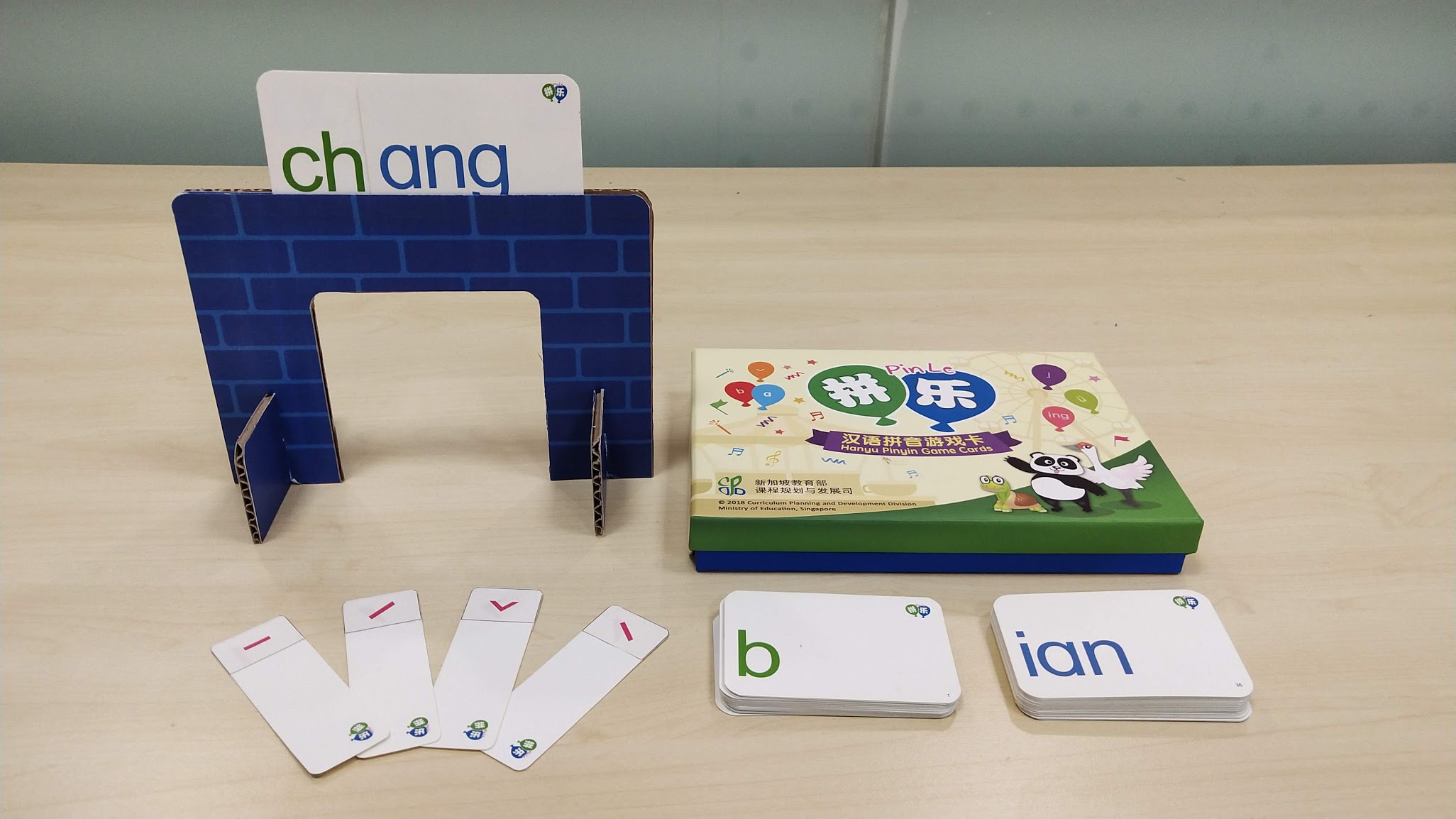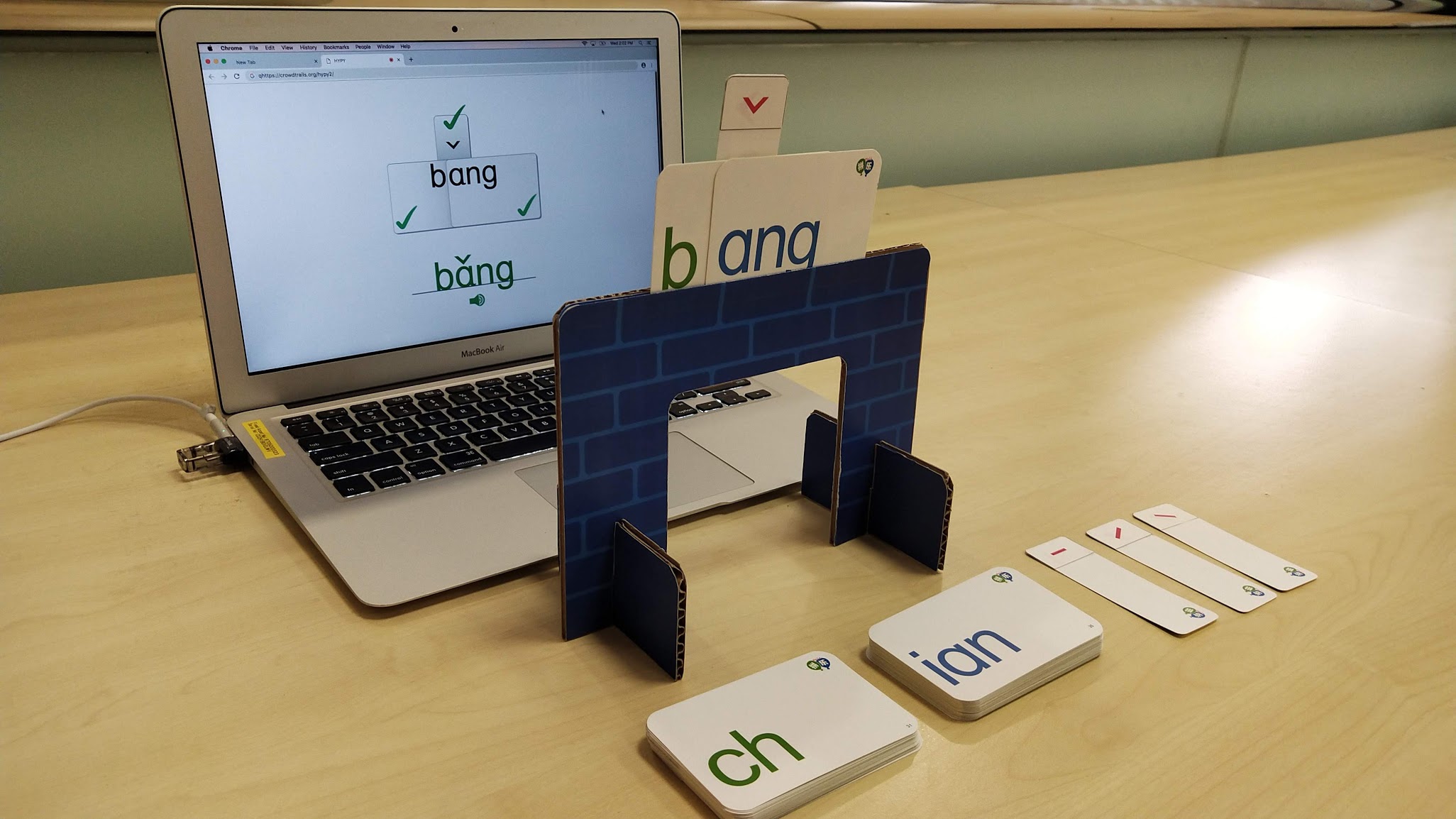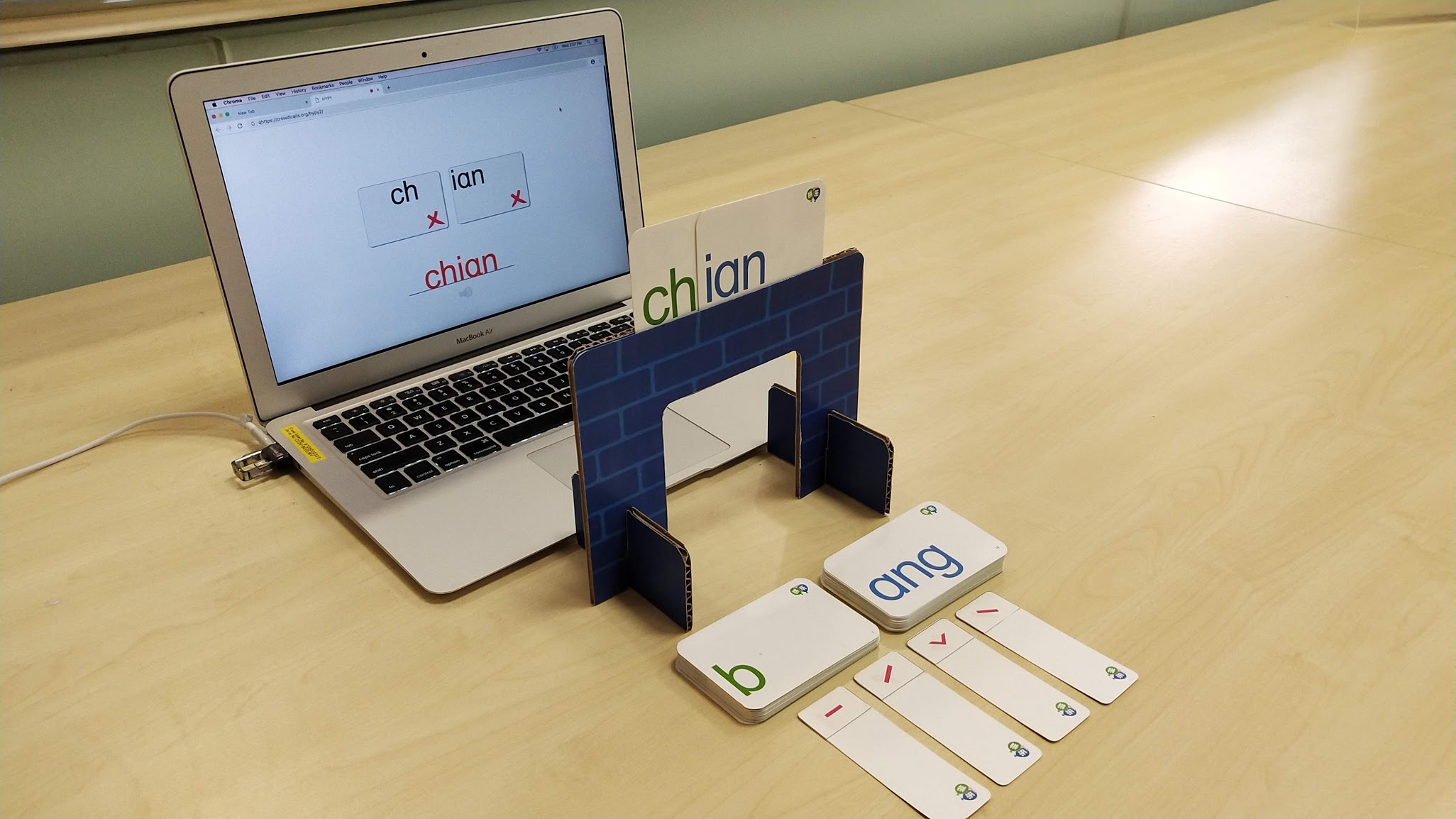
AR Pin Le
Overview
AR Pin Le is an augmented reality application that allows lower primary school students to learn Chinese characters via phonics (the characters' Hanyu Pinyin 汉语拼音) using the Pin Le cards.
Background
The Pin Le physical card game allows lower primary school students to learn Chinese characters via phonics (the characters’ Hanyu Pinyin). The deck is separated into 3 piles: Initials, Finals and Tone. Used individually or in a group, students are challenged to use the deck of cards to form words with the right intonation. Riding on the optimistic results of initial pilot studies, the Curriculum Planning and Development Division (CPDD), Ministry of Education (MOE) approached CUTE Centre to develop a complementary AR system (utilizing a computer alongside a card stand) for the purpose of providing feedback based on card input from students.
Key Problem(s)
While the original Pin Le cards offers a set of tangible medium which teachers can leverage on to teach Hanyu Pinyin in class, teachers are unable to be physically present with every group to ensure that students are forming the right set of Hanyu Pinyin combinations. In addition, there is no proper form of correct or wrong feedback to acknowledge students' card combination input. Students are given an answer sheet that they can independently verify if the combinations are correct. Students are however caught referring to the list as a basis to form their card combination. Therefore, students may learn the wrong combinations and hence build their knowledge on a poor foundation.
Objective
The aim of this project is to ensure that students can learn and understand how to independently form Hanyu Pinyin combinations based on 2 considerations:
- The new system would utilize AR technology to augment, display digital content and supply appropriate sensory cues. Content and cues serve as a form of feedback to acknowledge the card combination input from students
- Students should be able to systematically learn concepts by trial and error, understand why a particular card combination is incorrect, whenever applicable, and adjust accordingly based on guidance from the product
Solution
A fresh set of cards were created with unique AR markers on the cards’ backs. An application recognizes the marker on the back of the Initial, Final and Tone card, and displays the corresponding Hanyu Pinyin, accompanied with audio and visual cues on the screen. With the help of these markers, students are able to interact more with the Pin Le cards, which provides real-time feedback to them and can learn independently.
Gallery



Project Contact
Teo Chor Guan
idmtcg at nus.edu.sg
Team Members
Ben Low Chin Hong
Kevin Chiam
Teong Leong
Frieda Mak